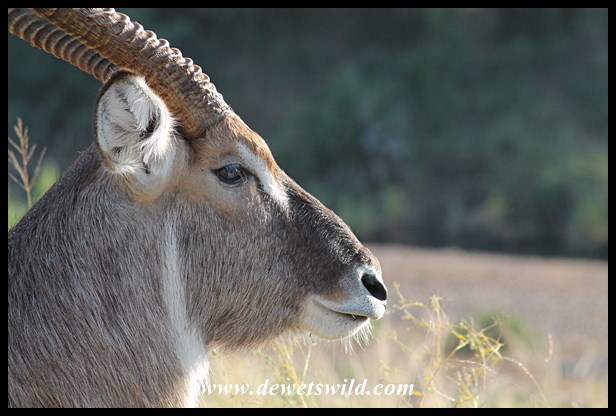The Kruger National Park is home to 21 different kinds of antelope – more than any other protected area in our country. Along with zebras and warthogs they form the staple prey for the majority of the large predators in the Park.
The Satara area of the park, which we visited in December 2021, hosts the largest concentrations of Blue Wildebeest in Kruger. Most Wildebeest calves are born at this time of the year, when the summer rains bring a flush of green fodder for the lactating cows.
Bushbuck aren’t seen around Satara all that often; the veld is generally too open for their liking in this part of the Park and any sightings are likely to be along the stream courses where the riverine vegetation provides the cover and browse they need.
The S36 road linking Satara and Orpen to the picnic spots at Muzandzeni and Nhlanguleni is usually reliable for finding Common Duikers, and if you are lucky these shy little antelope may stand still for a second or two so you can take a picture.
It is a real pity that the Impala is so numerous in Kruger that most visitors seem to not even spare them a second glance. They are actually really athletic and beautiful antelope.
Joubert got these photographs of two impala rams sparring.
The birth of Impala lambs are timed to occur en masse at the end of November and into early December. The lambs congregate into a “creche” within the herd when they’re at rest, but can often be seen running and chasing each other around – seems they have boundless energy.
In the evening of the 31st of December, along the Sweni Road (S126), we encountered a huge herd of Impalas. They were on the move, relinquishing the open plain where they were feeding for denser bush in which to spend the night. We spent several minutes with the herd as they walked off until the whole plain was abandoned.
Owing to the general scarcity of suitable rocky habitats around Satara, our only Klipspringer sighting of the entire 3 weeks we spent in that part of the Kruger Park was at an outcrop to the south of Tshokwane.

Three Klipspringers near Tshokwane
The open, thorny savanna around Satara supports a high density of the magnificent Greater Kudu and they can easily be seen along any of the roads that radiate from the camp.
By contrast, the Nyala is rarely encountered in this part of the Park and while they’re sometimes seen along the course of the Nwaswitsontso River south of Satara we had to go north to the banks of the Olifants River this time around to see this impressive bull.

Nyala bull
The Steenbok is the small antelope seen most often around Satara – they find the open grasslands perfectly to their liking.
The less I say about the expression on these Steenbokkies’ faces after mating, the better probably…
The Tsessebe is one of the rarest antelope in the Kruger National Park, and is not found near Satara. We undertook a day’s outing north to the Mopani area of the Park specifically to go looking for them, and luckily did not return to Satara with nothing to show for our effort.
Another large antelope you would defnitely encounter when visiting Satara is the Waterbuck. They’re quite numerous along the courses of the Nwanetsi and Gudzani streams to the east of the camp.


























































































































































































































